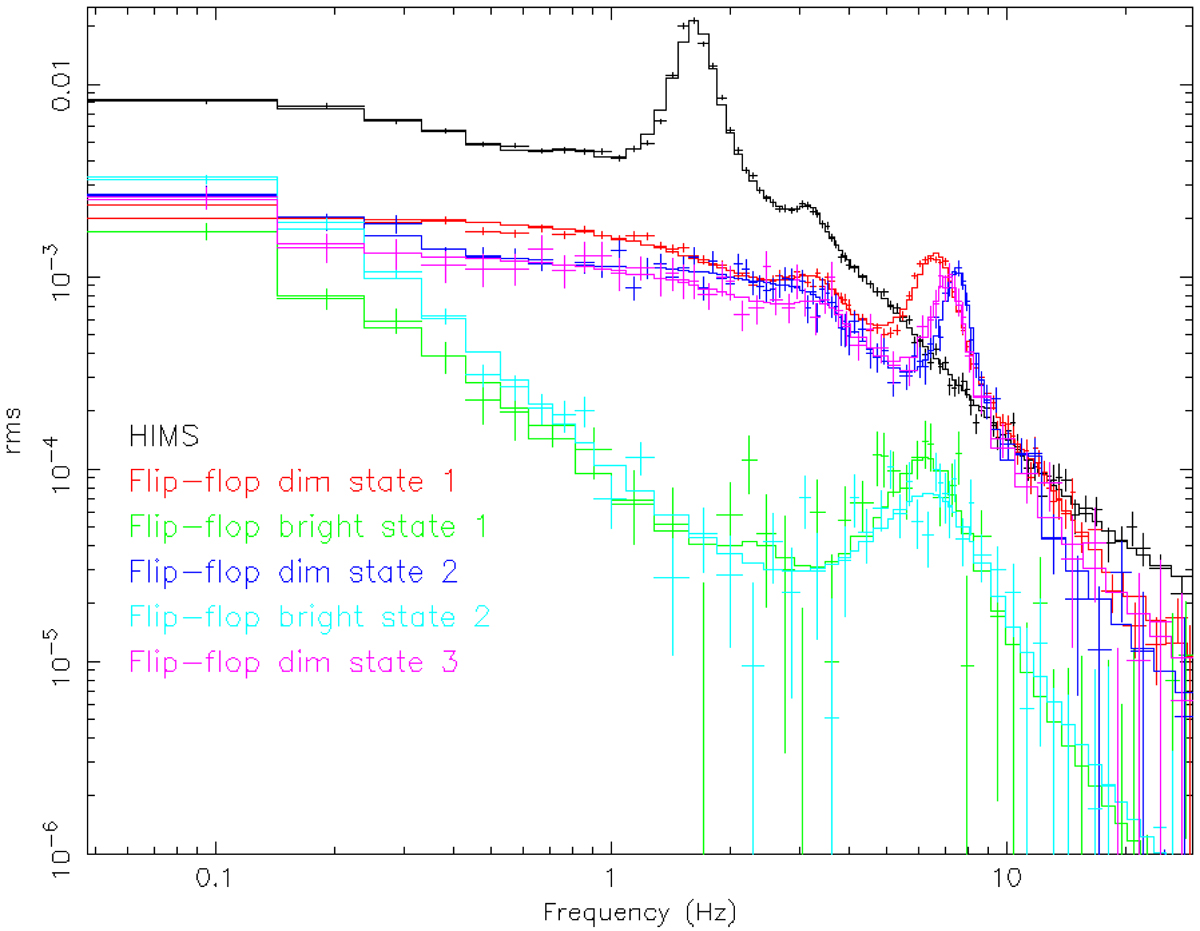Fig. 11.

Poisson noise subtracted, squared fractional rms normalised Astrosat PDSs of different intervals of the outburst. The first Astrosat observation in the LHS is marked in black, all other PDSs originate from different regions of the second Astrosat observation, which contains flip-flops (see Fig. 12). Both the LHS and Flip-flop dim state 1 PDSs have inflated widths due to being generated from a large time interval containing a variable type C QPO frequency. Generating the PDS for shorter intervals yields a narrower QPO. The same is not true for the type A QPOs seen in the bright states.
Current usage metrics show cumulative count of Article Views (full-text article views including HTML views, PDF and ePub downloads, according to the available data) and Abstracts Views on Vision4Press platform.
Data correspond to usage on the plateform after 2015. The current usage metrics is available 48-96 hours after online publication and is updated daily on week days.
Initial download of the metrics may take a while.


